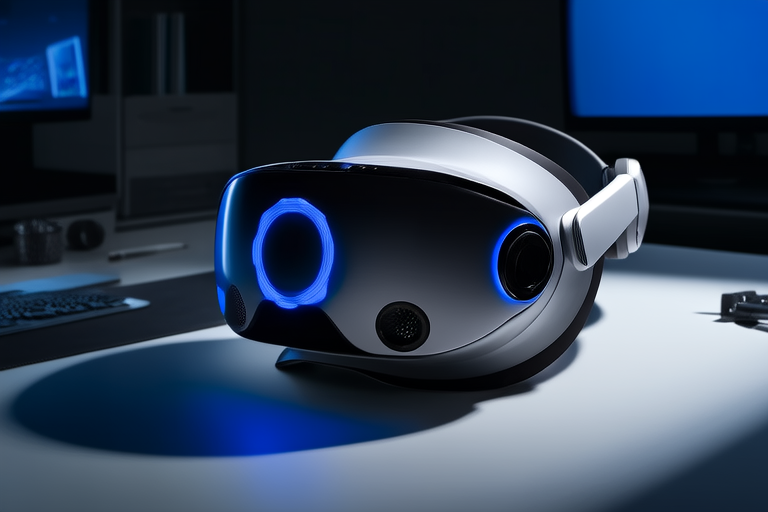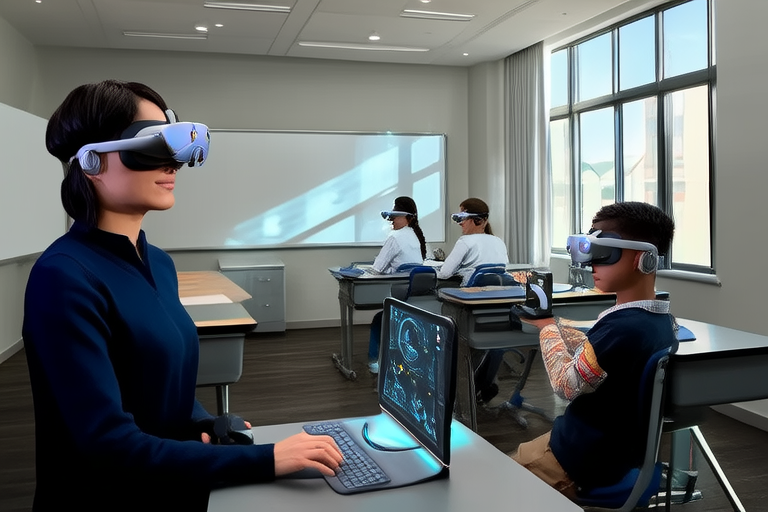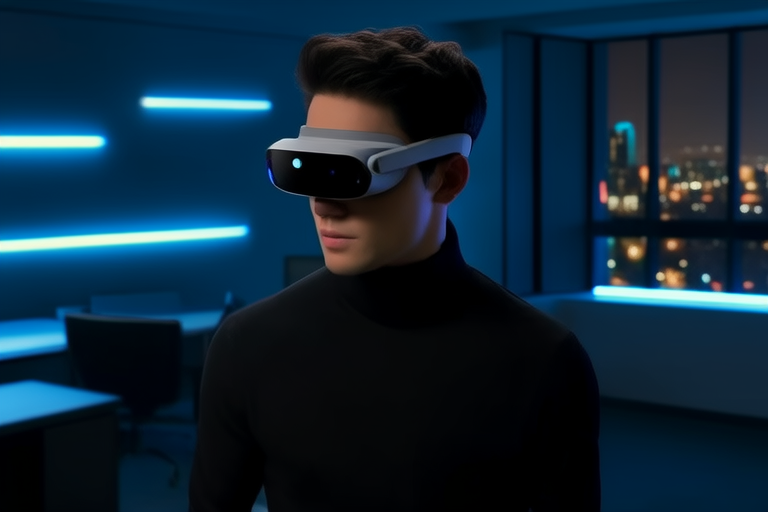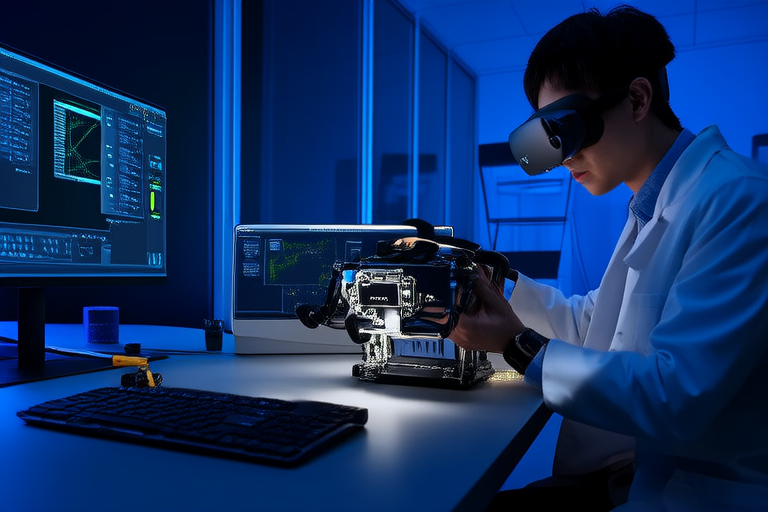“`html
The Next Big Thing: Innovations in VR and AR That Will Change Your World
Introduction
Virtual Reality (VR) and Augmented Reality (AR) are rapidly evolving technologies that are capturing the imagination of tech enthusiasts and industries alike. VR immerses users in entirely computer-generated environments, while AR overlays digital information onto the real world, enhancing our perception of reality. These technologies have come a long way since their inception, offering immersive experiences that were once thought to be confined to science fiction. Today, VR and AR are gaining significant attention due to their potential to revolutionize various sectors, from healthcare and education to entertainment and retail.
Over the years, both VR and AR have seen substantial improvements in hardware and software, making them more accessible and user-friendly. As these technologies continue to evolve, they promise to reshape the way we interact with digital content, providing unprecedented opportunities for innovation and transformation across multiple industries.
Recent Breakthroughs in VR Technology
One of the most notable advancements in VR technology is the development of new headsets that offer higher resolutions, wider fields of view, and faster refresh rates. These improvements significantly enhance the user experience, reducing motion sickness and increasing immersion. For instance, the latest generation of VR headsets features OLED screens that provide sharper images and smoother transitions, while some models boast a 180-degree field of view, allowing users to feel fully enveloped in the virtual environment.
In addition to hardware upgrades, there have been significant strides in VR controller design. Newer controllers feature haptic feedback, which simulates touch sensations, adding another layer of realism to interactions within the virtual world. This advancement enables users to feel the weight and texture of objects, making the experience more intuitive and engaging.
These advancements are not just theoretical; they have practical implications. For example, in the field of training and simulation, VR provides a safe and controlled environment for professionals to practice complex procedures without risking real-world consequences. The enhanced resolution and field of view make it easier for users to focus on details, while improved refresh rates reduce lag, ensuring a seamless experience.
Recent Breakthroughs in AR Technology
AR technology has also seen remarkable progress, particularly in the development of smart glasses and other wearable devices. These devices leverage advancements in spatial mapping, tracking accuracy, and real-time object recognition to create more immersive and interactive experiences. For example, AR smart glasses can project digital information onto the wearer’s field of vision, providing hands-free access to data in real-time.
Improvements in spatial mapping allow AR systems to accurately model and understand the physical environment, enabling more precise overlay of digital content. Enhanced tracking capabilities ensure that virtual objects remain aligned with their real-world counterparts, creating a seamless integration between the two worlds. Real-time object recognition further enhances this capability by allowing AR systems to identify and interact with specific objects within the environment.
These advancements are making a significant difference in real-world applications. In retail, for instance, AR technology can provide customers with product information and virtual try-ons, enhancing the shopping experience. In manufacturing, AR can assist workers in assembling complex machinery by providing step-by-step visual instructions, reducing errors and improving efficiency.
Applications Across Industries
Healthcare
VR and AR are transforming healthcare by providing innovative solutions for patient care and medical training. In surgical training, VR simulations allow aspiring surgeons to practice intricate procedures in a risk-free environment. This not only improves their skills but also reduces the learning curve, leading to better patient outcomes.
AR is also playing a crucial role in patient care by enabling doctors to visualize complex anatomical structures in real-time. This capability is particularly useful in pre-operative planning, where AR can help surgeons plan and execute procedures with greater precision.
Education
VR and AR are revolutionizing education by providing immersive learning experiences that engage students in ways traditional methods cannot. In classrooms, VR can transport students to historical events or distant planets, making learning more interactive and memorable. AR can overlay digital information onto physical objects, helping students visualize complex concepts in real-time.
For example, in chemistry classes, AR can display molecular structures in 3D, allowing students to manipulate and explore them interactively. This hands-on approach fosters a deeper understanding of the subject matter and enhances retention.
Entertainment
The entertainment industry is embracing VR and AR to create more immersive and interactive experiences for audiences. VR gaming offers players the opportunity to step into their favorite games and become part of the action. With advancements in graphics and haptic feedback, VR games provide a level of immersion that was previously unimaginable.
AR is also finding its place in entertainment through interactive experiences that blend the physical and digital worlds. For instance, AR apps can bring characters from movies or video games to life, allowing fans to interact with them in real-time. These experiences create a sense of wonder and excitement, enhancing the overall entertainment value.
Retail
VR and AR are changing the retail landscape by offering customers more personalized and engaging shopping experiences. Retailers are using AR to provide virtual try-ons for clothing and accessories, allowing customers to see how items look before making a purchase. This not only increases customer satisfaction but also reduces returns.
AR can also enhance the in-store experience by providing shoppers with product information and recommendations based on their preferences. This level of personalization creates a more satisfying shopping experience, driving customer loyalty and sales.
Manufacturing
In manufacturing, VR and AR are streamlining production processes and improving quality control. VR simulations allow manufacturers to test and refine assembly lines before actual production begins, identifying potential issues early in the process. This not only saves time and resources but also ensures that products meet the highest standards of quality.
AR is used to provide workers with real-time guidance during assembly tasks, ensuring that each step is performed correctly. This reduces errors and improves efficiency, leading to higher productivity and better product quality.
Challenges and Future Prospects
Despite the many advancements in VR and AR, several challenges still need to be addressed. One of the primary concerns is cost, as high-quality VR and AR devices can be expensive. This limits accessibility, especially for individuals and small businesses. Additionally, user comfort remains a challenge, with some users experiencing discomfort or motion sickness when using VR headsets for extended periods.
However, the future looks promising for VR and AR. Upcoming trends include the development of more affordable and comfortable devices, as well as advancements in cloud-based VR and AR, which will enable users to access high-quality experiences without requiring powerful local hardware. As these technologies continue to evolve, we can expect to see even more innovative applications that will further revolutionize the way we live and work.
Looking ahead, the integration of VR and AR into everyday life seems inevitable. From virtual meetings to augmented shopping experiences, these technologies will play a significant role in shaping the future of communication, education, and entertainment.
“`




